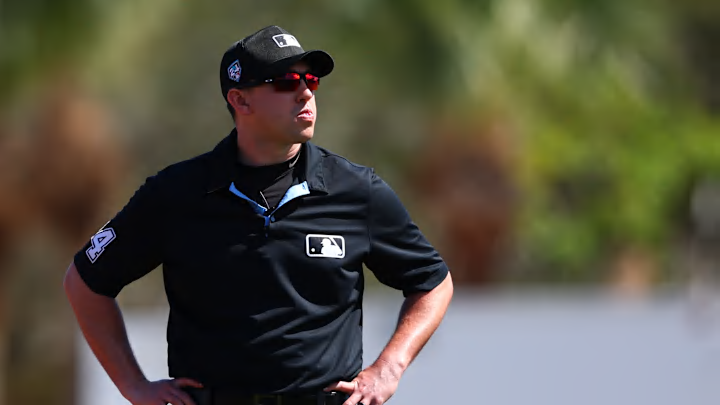What if I told you there was once a day when human umpires ruled all? It didn't matter if they were right, wrong, or somewhere in between. These human umpires often took objections from players or managers personally, either ejecting those who intervened from the game itself or humiliating them in front of thousands of fans. Those days, we can only hope, are long gone.
Thursday's Cactus League game between the Los Angeles Dodgers and Chicago Cubs was the first in which ABS, or automated ball-strike technology, was employed in a major-league game. It was put to the test early thanks to Chicago Cubs pitcher Cody Poteet, who made some history of his own. Not only was Poteet the first MLB player to issue a challenge via ABS, but he won! Imagine that.
Our first ABS challenge of the 2025 MLB season pic.twitter.com/EHMzz7c2Bk
— BaseballHistoryNut (@nut_history) February 20, 2025
Now, ABS will not fully take over for human umpires. It is, by all accounts, a challenge system meant to keep them honest, and provide players and managers with an opportunity to plead their case. The hope is this will lead to less on-field confrontations, which every umpire from Joe West to Angel Hernandez would've hated. For us, the viewer, it's both a blessing and a curse.
How does MLB's new ABS challenge system work?
The ABS system isn't all that complicated, though it will surely look funny to MLB fans who aren't used to it. ABS has been used in the Atlantic League to rave reviews, which is why Rob Manfred and MLB is willing to experiment with it during spring training games.
Basically, pitchers, catchers and hitters can challenge a called pitch if they disagree with the umpire. Assuming that challenge comes within a set time period – and don't worry, umpires will be strict about that part of this whole ordeal – ABS will tell us whether the call was correct or not. Since the process shouldn't delay the game much, each team is given two challenges.
A similar system is used in tennis, where players can challenge whether a ball is in or over the end line. It is for the betterment of the game itself, and limits the number of game-changing calls in the wrong direction.
Consider spring training a trial run for ABS. If umpires, players and managers do not enjoy the changes to pace of play or the human element, MLB can abandon it altogether. For now, though, it's smart for the league to use every weird piece of tech to its advantage to combat bad decisions.
